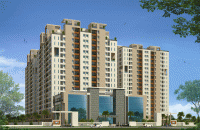New Mall
Supply Pegged at 16.6 Mn Sft Across Top 7 Cities in CY 2025-26
- 16.6 Mn sq. ft. of Grade A
mall space is scheduled for completion in 2025 & 2026 across the top 7
cities: Hyderabad & Delhi NCR to have the lion's share (approx. 65%)
- With previous years'
demand-supply imbalance gradually normalizing, mall vacancy rates to
stabilize at 8.2% & 8.5% in 2025 & 2026, respectively; vacancy
peaked at 15.5% in 2021
- Total mall leasing pegged at
>12.6 Mn sq. ft. across the top 7 cities over the next 2 years
- High aspirational demand
prompts entry of 60+ global fashion, electronics, lifestyle, & F&B
brands in the last 4 years, boosting demand for organized spaces in
high-footfall malls & high streets
- Retail boom transcends
metros - Tier 2 & 3 cities becoming consumption hotbeds with ecommerce
outpacing Tier 1 cities with ~56% online shopping share in FY 2024, may
touch 64% in FY 2030
Mumbai,
12 May 2025: In
India’s ongoing golden era of retail expansion, consumer demand and retail real
estate supply are on an unprecedented growth trajectory. Rising consumption is
driving a surge in new mall supply in Tier 1 over the next two years - latest
ANAROCK Research estimates that over 16.6 Mn sq. ft. of new Grade A mall supply
will enter the top 7 cities over 2025 and 2026.
With a
combined 65% share of this supply, Hyderabad and Delhi-NCR will command the
lion's share, underscoring the shift of focus to high-growth consumption hubs.
This surge is part of a broader pipeline that could add more than 40 million
sq. ft. of retail space by 2029 across major urban centres.
Anuj
Kejriwal, CEO & MD - ANAROCK Retail, says, "The surge is also prompted by a
perceivable shortfall in new supply of Grade A malls across cities. The
previous three-year data trends show that new mall supply in the top 7 cities
did not match the overall leasing. In 2022, these cities witnessed approx. 2.6
Mn sq. ft. of new Grade A retail supply, while leasing clocked in at approx.
3.2 Mn sq. ft. Likewise, 2023 saw 5.3 Mn sq. ft. of new Grade A mall supply,
while 6.5 Mn sq. ft. were leased.
The
demand-supply gap widened further in 20204 due to approvals slowing down
because of general and state elections.
"New
Grade A mall supply in 20204 was just 1.1 Mn sq. ft., while leasing was 6.5 Mn
sq. ft.," says Kejriwal. "The data speaks for itself."
While the
estimated new supply to some extend raises the spectre of potential oversupply,
current absorption trends are reassuring. ANAROCK data pegs total mall leasing
over the next two years at >12.6 Mn sq. ft. across the top 7 cities. Both
mall developers and retailers are showing resolute confidence, spurred by
strong leasing and positive consumer sentiments.
"The
strong leasing rate is also prompted by the entry of over 60 international
retail brands in India over the last four years across categories like fashion,
electronics, lifestyle, & F&B," adds Kejriwal. "This has
accelerated demand for high-grade organized retail spaces, particularly in
high-footfall zones like malls and high streets."
Data also
indicates that with demand-supply imbalance of previous years now gradually
normalizing, mall vacancy rates in top 7 cities will stabilize over the next
two years - at 8.2% in 2025 and 8.5% in 2026. In 2021, the vacancy rate in
these cities was as high as 15.5%.
Source:
ANAROCK Research
Insatiable
Thirst for Consumption
The
current retail boom is not limited to urban metros - Tier 2 and Tier 3 cities
have emerged as the new consumption hotbeds, thanks to rising disposable
incomes and deeper smartphone and internet penetration. Ecommerce adoption in
these cities has outpaced that of Tier-1 cities - industry estimates peg the
share of overall online shopping pie at 65% and predict it to reach 64% by FY
2030. The number of Indian online shoppers has jumped up from 140 Mn in 2020 to
nearly 260 Mn in 2024; it is projected to nearly double to 300 Mn by 2030, and
to 700 Mn by 2035.
Source:
ANAROCK & Market Intelligence





























